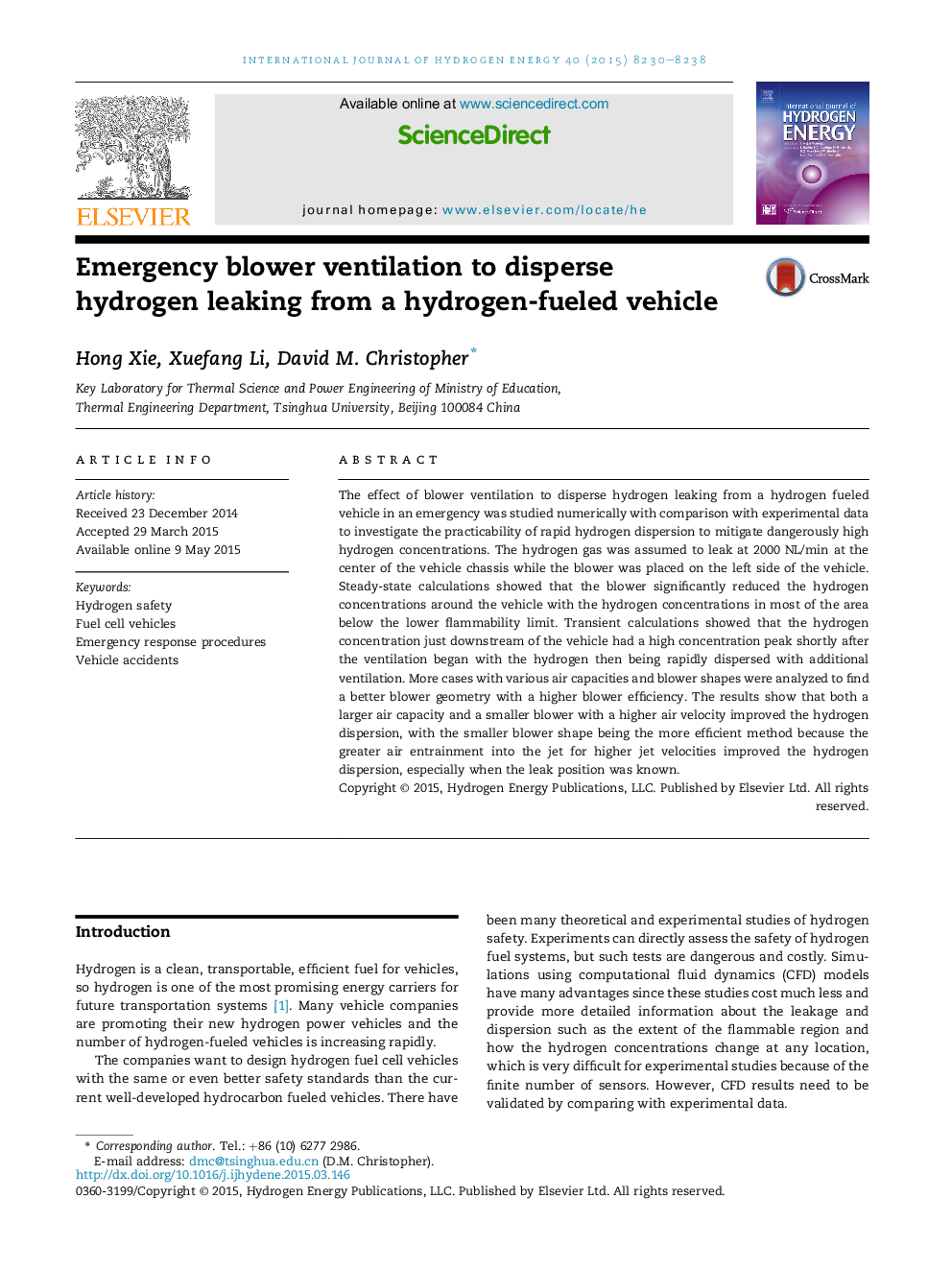| Article ID | Journal | Published Year | Pages | File Type |
|---|---|---|---|---|
| 1270817 | International Journal of Hydrogen Energy | 2015 | 9 Pages |
•Blower ventilation effectively disperses leaking hydrogen from a fuel-cell vehicle.•A fast, high hydrogen concentration peak occurs shortly after ventilation begins.•Both higher air capacities and higher velocities improve hydrogen dispersion.•Smaller blower shapes are recommended for much higher blower efficiencies.
The effect of blower ventilation to disperse hydrogen leaking from a hydrogen fueled vehicle in an emergency was studied numerically with comparison with experimental data to investigate the practicability of rapid hydrogen dispersion to mitigate dangerously high hydrogen concentrations. The hydrogen gas was assumed to leak at 2000 NL/min at the center of the vehicle chassis while the blower was placed on the left side of the vehicle. Steady-state calculations showed that the blower significantly reduced the hydrogen concentrations around the vehicle with the hydrogen concentrations in most of the area below the lower flammability limit. Transient calculations showed that the hydrogen concentration just downstream of the vehicle had a high concentration peak shortly after the ventilation began with the hydrogen then being rapidly dispersed with additional ventilation. More cases with various air capacities and blower shapes were analyzed to find a better blower geometry with a higher blower efficiency. The results show that both a larger air capacity and a smaller blower with a higher air velocity improved the hydrogen dispersion, with the smaller blower shape being the more efficient method because the greater air entrainment into the jet for higher jet velocities improved the hydrogen dispersion, especially when the leak position was known.
